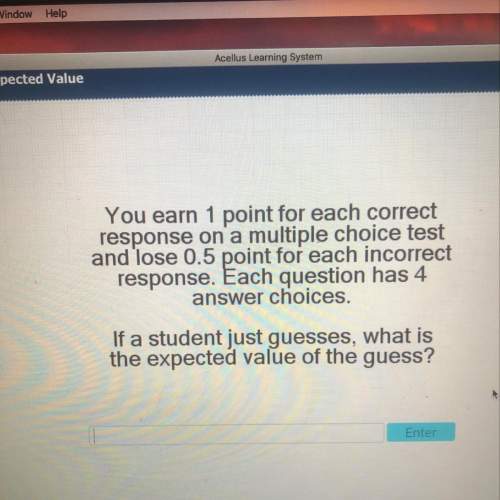
Mathematics, 11.02.2020 21:46 jessiegarrison1
Identify all mistakes made in the following proof that for each integer n, there is an integer k such that n < k < n+2.
Suppose n is an arbitrary integer. Therefore, k = n + 1 for all integers n. This means that n < n + 1 < n + 2. This proves that an integer k exists.
ASuppose n is an arbitrary integer. Therefore, k = n + 1
The choice of k = n + 1 does not follow from the fact that n is an integer. The inappropriate word "Therefore" should be replaced by "Pick", "Select", "Choose" or other words to that effect.
BTherefore, k = n + 1 for all integers n.
After we decided that n is some integer, n is just that - an integer. It's no longer a free variable. It makes no sense to apply universal quantification to it, again just like it makes no sense to say " 2 + 3 = 5 for all integers 5".
CTherefore, k = n + 1 for all integers n. This means that n < n + 1 < n + 2.
It makes no sense to draw a conclusion from a variable definition that does not reference the variable. n < n + 1 < n + 2 is true for all n regardless of what k is. The proper conclusion to be drawn from the definition of k is that n < k < n+2.
D This proves that an integer k exists.
We know that integers exist. If we're going to make a concluding statement that summarizes the theorem we have proved, we must quote the theorem correctly, not a caricature of our theorem. A correct concluding statement would be: this proves that for every integer n, an integer k exists such that n < k < n+2.

Answers: 2


Other questions on the subject: Mathematics

Mathematics, 21.06.2019 21:30, Kizmit1423
How does reflecting or rotating a figure change the interior angles of the figure?
Answers: 2

Mathematics, 21.06.2019 21:40, dededese2403
Astudy was interested in determining if eating milk chocolate lowered someone's cholesterol levels. ten people's cholesterol was measured. then, each of these individuals were told to eat 100g of milk chocolate every day and to eat as they normally did. after two weeks, their cholesterol levels were measured again. is there evidence to support that their cholesterol levels went down? how should we write the alternative hypothesis? (mud = the population mean difference= before - after)a. ha: mud = 0b. ha: mud > 0c. ha: mud < 0d. ha: mud does not equal 0
Answers: 1

Mathematics, 21.06.2019 22:30, smarty5187
One number is 4 less than 3 times a second number. if 3 more than two times the first number is decreased by 2 times the second number, the result is 11. use the substitution method. what is the first number?
Answers: 1

Mathematics, 21.06.2019 23:00, Tyrant4life
If t8 = 4 and t12 = −2, find the first three terms of the arithmetic sequence.
Answers: 1
You know the right answer?
Identify all mistakes made in the following proof that for each integer n, there is an integer k suc...
Questions in other subjects:



Mathematics, 17.01.2021 02:50


Mathematics, 17.01.2021 02:50




Mathematics, 17.01.2021 02:50





